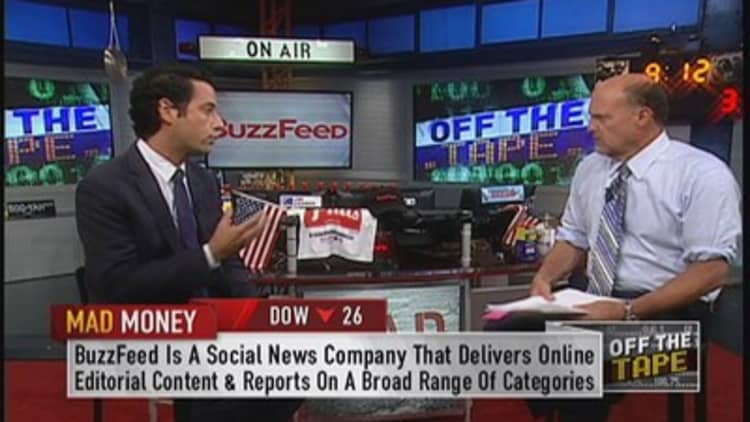There's a pretty good chance you've stumbled across a BuzzFeed article in the past week, if not the past 24 hours, while checking your Facebook newsfeed or some other social platform. In fact, you may have even been the one posting a BuzzFeed story to your social accounts.
The media company has taken off during the last five years, going from about 600 unique views a month to 85 million last month. One primary reason for BuzzFeed's success in making content go viral: its use of social data.
"We have lots of machine learning, years and years, millions and billions of page views and engagements. ... With that data we have to figure out what is most actionable, what is most important," said Eric Harris, executive vice president of business of operations at BuzzFeed, at the Social Data Week conference in New York on Friday.
"So we do have algorithms, which helps us predict when something is taking off, which helps us to double and triple down to really promote that content, at just the right time," he said.
Harris said that a lot of the math the company uses looks at the traffic coming to BuzzFeed and analyzing the data in real time to predict what will take off.

Social data has also enabled the company to learn what kind of stories do well on certain social sites, Harris said. With this data BuzzFeed's staff will create content targeted to specific platforms, such as Twitter or Pinterest, he said.
(Read more: Twitter IPO: 'Gray market' indicates appetite)
But before the data tricks even come into play, the company makes sure that all its content is created with a focus on social, Harris said.
"What we do at BuzzFeed—and really for everyone who creates content for us and for our community—we want them to think to themselves, Why would someone share this? What is the social imperative?" he said. "In creating content for BuzzFeed, our editors, our journalists, our creatives are always thinking about that why someone would share this."
"There are no tricks in social," Harris said. "You can trick someone to click on it, but you can't trick them to share it."
The company doesn't seem to have a problem getting people to share its content, though.
BuzzFeed gets 75 percent of its unique views from social sources, Facebook being the biggest referrer, Harris said. Traffic coming from Facebook also lasts longer, he added—usually several days, as opposed to a few hours from other social sites.
—By CNBC's Cadie Thompson. Follow her on Twitter @CadieThompson.


